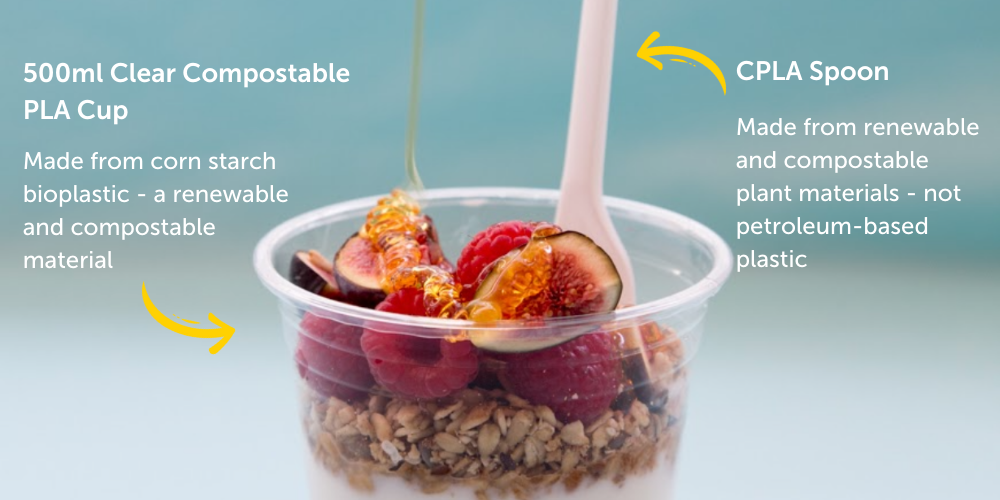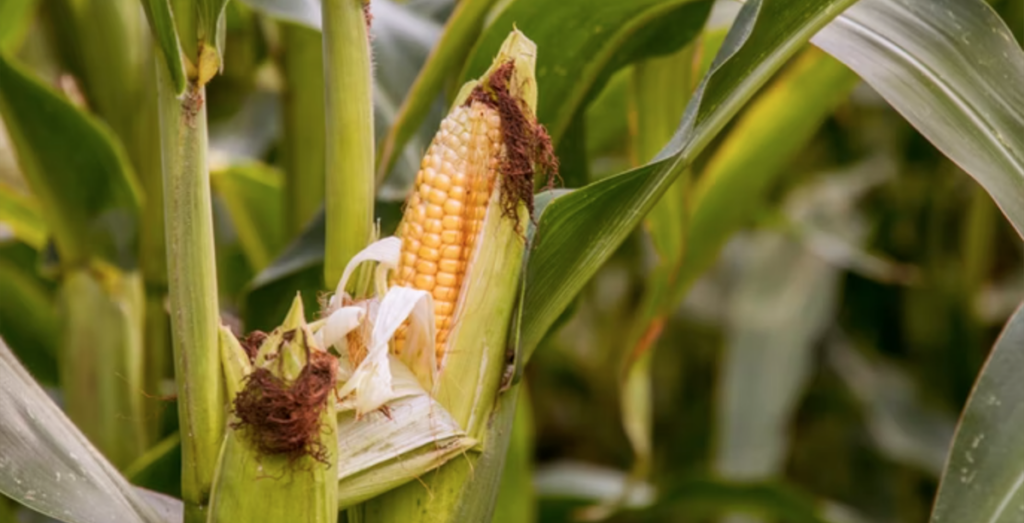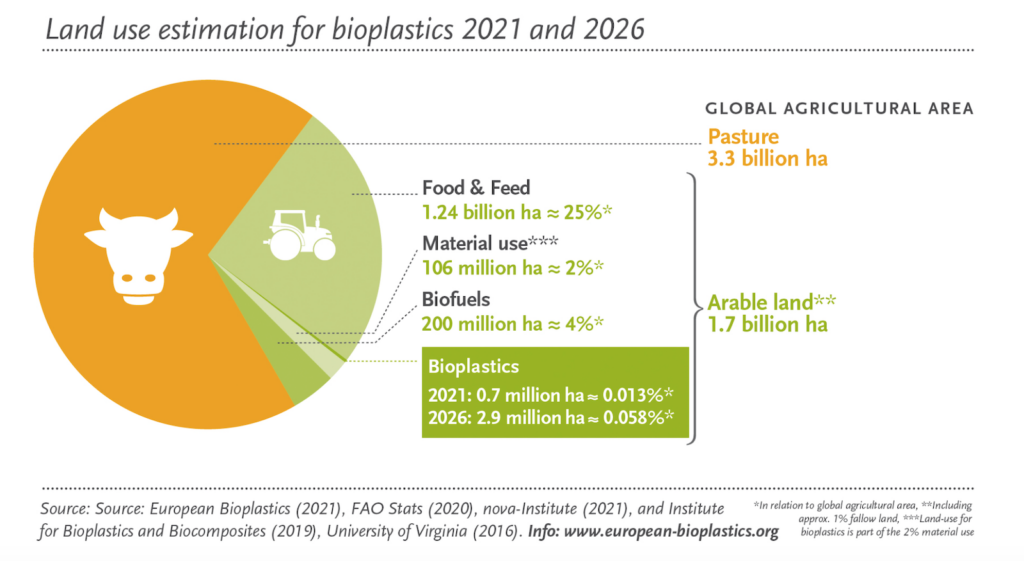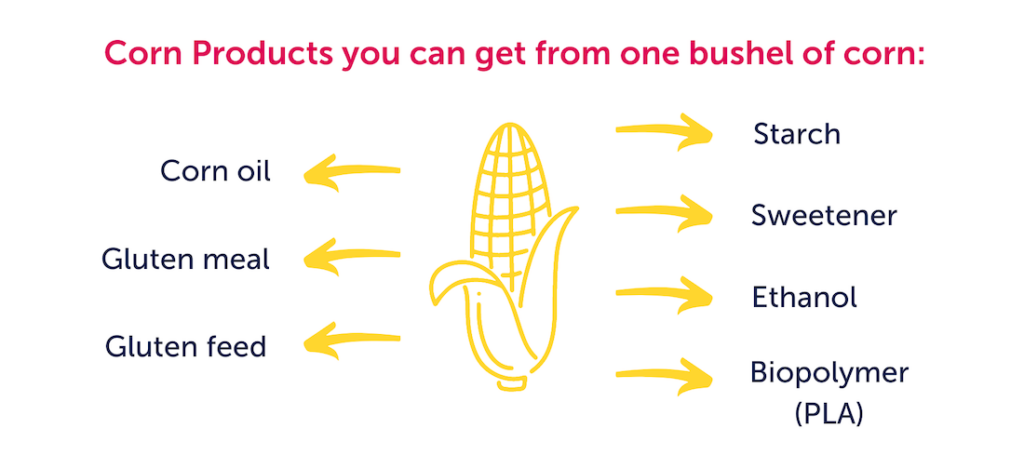PLA bioplastic – does it really pose a risk to food security?
GREEN HOME’s low-carbon, compostable CPLA Cutlery, clear Bowls and Cold Cups are made from PLA (polylactic acid) bioplastic. And PLA is made from corn starch.

Because corn is often a food crop, some people have claimed that this could affect food security. We will explain why this not the case. Compostable bioplastics definitely don’t threaten food security, and might even help to stabilise markets that affect food prices.
In this article we’ll show you how little land is used to grow corn for bioplastics. And we’ll outline how the same crop of corn can be used for both industrial and food purposes, not either or. We’ll also take a look at some of the real threats to food security.
The Many Uses of Corn
Humans have always used plants for both food and non-food purposes. For building materials, clothing, paper and books, fuel, furniture, rubber among many other functions. And corn is a particularly widely used plant.

Corn is used for multiple purposes beside mielies, pap, corn flakes and tortilla chips.
Cosmetics, baby powder, medicines, vitamins, adhesives, textiles, soaps, shoe polish and building materials are just a few of the products corn is in. It is also used very widely as animal feed and turned into ethanol which is used in fuel.
How Much Land is Used for Bioplastics?
Take a look at the pie chart for land use below.
While huge amounts of agricultural lands were used for livestock, only 0.013% were used for bioplastics last year, less than can actually be visible on the pie chart. And of this, even less was used for PLA (most will be other types of bioplastics). And in 5 years bioplastics are estimated to grow to 0.058%. Still less than 0.06%.

The large orange section shows land use for pasture for the meat and dairy industry. This is clearly the largest area by far (and is far too big according to scientists).
The green section shows land use for human food as well as animal feed.
The light green section is material use – for example paper and cotton – which takes up 2%, and includes the less than 0.02% of land used for bioplastics.
Corn Crops can be used for Food & Bioplastic Simultaneously
The type of corn used for PLA is often called industrial grade corn or field corn. (This is different to the type of corn we like to eat on the cob: sweet corn – aka mielies.)
Industrial / field corn comes in two varieties: yellow and white. The yellow kind is grown primarily for animal feed and industrial purposes – including PLA. The white is primarily used for various foods and food-grade starch and papers.
(We actually grow a lot of white corn food crops here in South Africa, as well as some sweet corn. And we export surplus to our neighbouring countries. South Africans do love pap and mielies!)
Now, it’s important to understand that an industrial grade corn crop can fulfil a variety of purposes at the same time. All the parts of a crop are processed in a bio-refinery to produce feedstocks to meet different needs. The starch can be used for PLA, while the plant-based proteins can be used for livestock feed.
Using the starch for PLA leaves the corn oil, gluten feed and gluten meal markets unaffected.

Some research suggests that the industrial and material use of biomass (from corn and other crops like sugarcane and cassava) could even help stabilise food prices, by providing farmers with more secure markets and thus leading to more sustainable production. This represents a benefit to food security.
The Real Threats to Food Security
Globally, one of the biggest challenges to food security is climate change. And the biggest driver of climate change is fossil fuels. Since conventional plastics are made from fossil fuels, switching over to bioplastics is a way to reduce fossil fuel consumption. Bioplastics also tend to have a much lower carbon footprint, further reducing their impact.
Also, composting our food packaging along with our food waste can further reduce greenhouse gas emissions. And the resulting compost can help soils absorb carbon, and make them more drought and flood resistant. This helps to offset climate change impacts.
Poverty and access to food is another major food security issue. Globally, we waste 30% of the food we produce. It’s not that we’re not producing enough. We have access and distribution issues, largely linked to inequality, poverty and fluctuations in global markets.
Political unrest, like the 2021 riots in KwaZulu-Natal for example, can also affect people’s ability to access affordable food.
Unsustainable farming practices and food choices also pose a major threat to food security.
As we can see, food security is a complex issue. And one that we take very seriously. We would not promote corn starch bioplastic without being convinced it is a more sustainable solution, a switch to a greener product that’s better for the environment and those who live in it.

